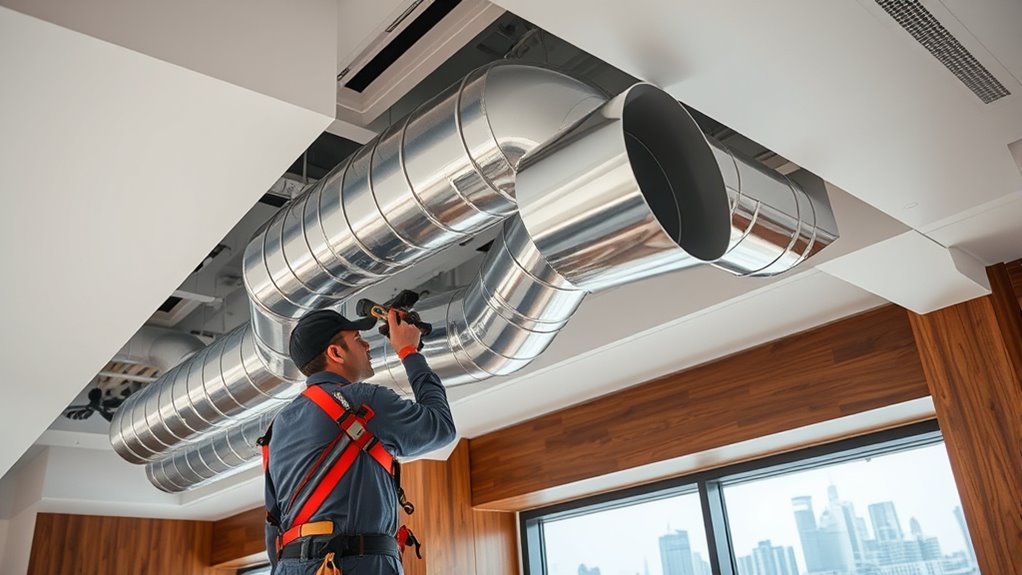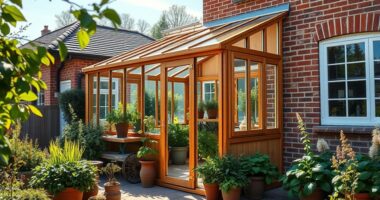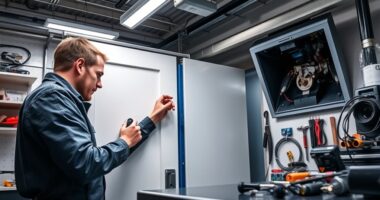Installing ventilation is key to achieving proper air circulation in your home. It boosts comfort, reduces allergens, and prevents moisture buildup. You can choose from natural systems, like window ventilation, or mechanical options, such as exhaust fans and energy recovery ventilators. It’s important to maintain these systems by regularly changing filters and scheduling duct cleanings. Proper installation and maintenance can enhance your home’s value and efficiency. Learn how to choose the best system and optimize air quality for your space.
Key Takeaways
- Assess your space to determine the appropriate type of ventilation system, such as natural or mechanical, based on your needs.
- Ensure ventilation rates meet recommended guidelines, like 0.35 air changes per hour for residential buildings.
- Install exhaust fans in high-moisture areas, such as bathrooms and kitchens, to control humidity and prevent mold growth.
- Regularly maintain and clean your ventilation systems, including replacing filters every 1-3 months and scheduling duct cleaning every 5-7 years.
- Consider energy recovery ventilators for improved efficiency and air quality while minimizing energy loss in your home.
Understanding the Importance of Ventilation
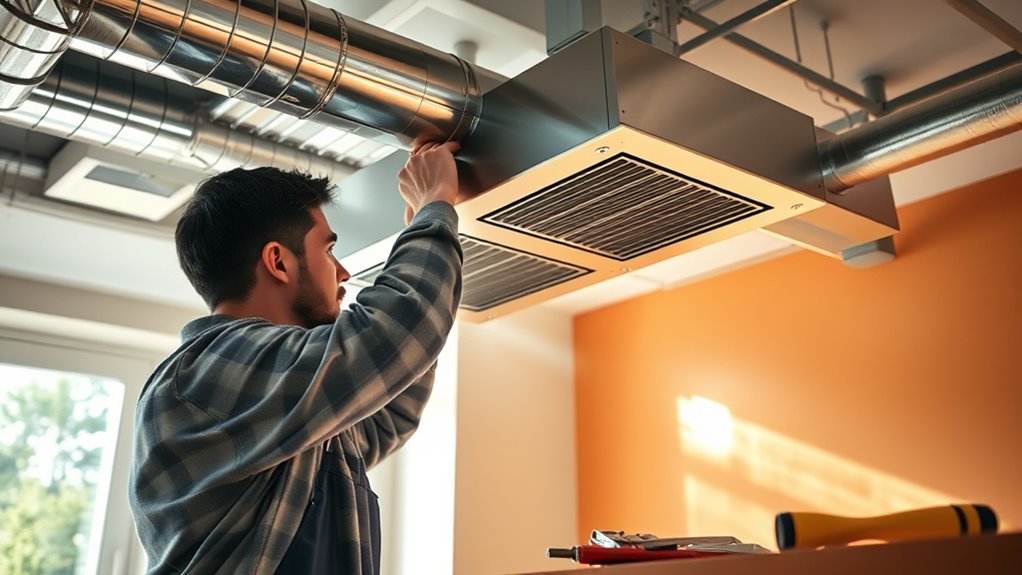
When you understand the importance of ventilation, you realize it’s not just about air flow—it’s essential for your health and well-being.
Proper ventilation reduces respiratory risks by preventing airborne pollutants from accumulating, which can lead to asthma and allergies. It also keeps moisture in check, thwarting mold growth that can harm your lungs. Improved air quality means fewer allergens and pollutants, creating a healthier indoor environment.
Proper ventilation is vital for reducing respiratory risks, preventing mold growth, and ensuring a healthier indoor environment.
You’ll also notice better comfort, as effective ventilation regulates temperature and humidity levels. Furthermore, good ventilation minimizes the spread of airborne diseases, promoting a safer atmosphere for everyone.
Ultimately, prioritizing ventilation enhances your overall health and productivity, making it a crucial aspect of any living or working space.
Types of Ventilation Systems Available
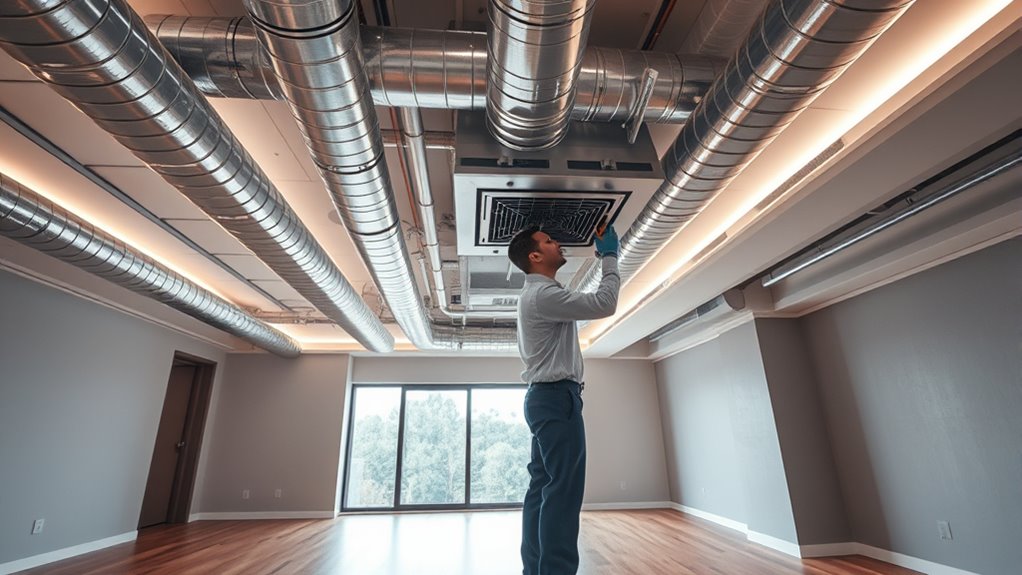
Understanding the various types of ventilation systems available is crucial for optimizing air quality in any space.
You can choose from natural ventilation, which relies on wind and thermal buoyancy, or mechanized fan ventilation, using electric fans to control airflow.
Smoke ventilation is essential in public buildings for fire safety. For whole-house solutions, consider exhaust-only systems that remove stale air, or supply-only systems that bring in fresh air.
Balanced ventilation combines both methods for effective airflow. Energy recovery and heat recovery systems minimize energy loss while ensuring comfort.
Mechanical options include axial and centrifugal fans, along with localized spot ventilation for specific areas. Each system serves its purpose depending on your needs and climate.
Recommended Ventilation Rates and Requirements
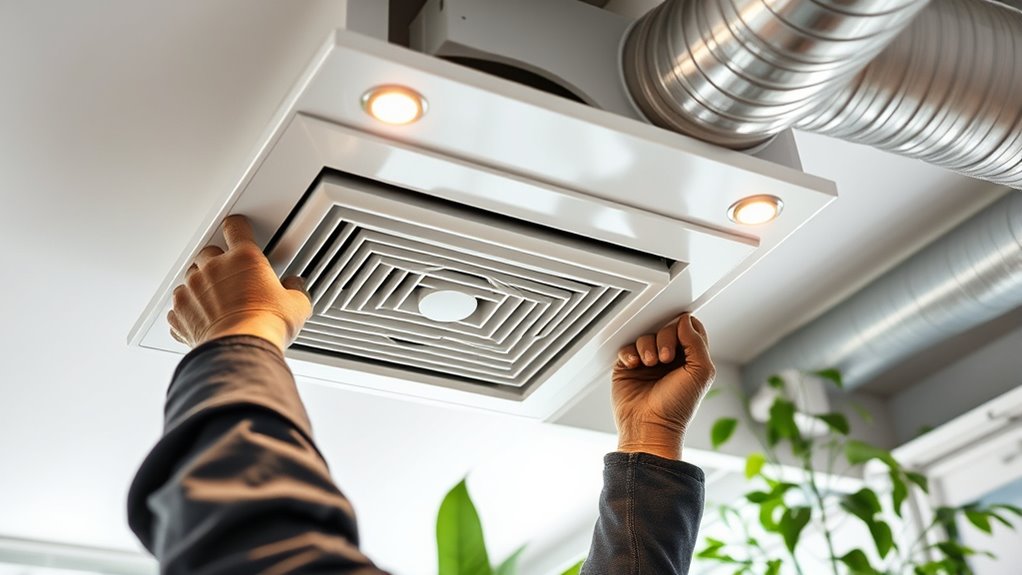
Selecting the right ventilation system is just the beginning; knowing the recommended ventilation rates and requirements is vital for maintaining a healthy indoor environment.
For residential buildings, you need at least 0.35 air changes per hour, and a continuous rate of 50 CFM for every 1,000 square feet works well. Bathrooms require a minimum of 50 CFM for intermittent use, whereas kitchens often need higher rates, depending on the range size.
Offices typically require 20 CFM per person, while classrooms need around 15 CFM per person. Remember, local building codes may vary, so ensure you’re compliant.
Following these guidelines helps reduce indoor pollutants and improves overall health, making your living space more comfortable and safe.
Key Components of Ventilation Systems
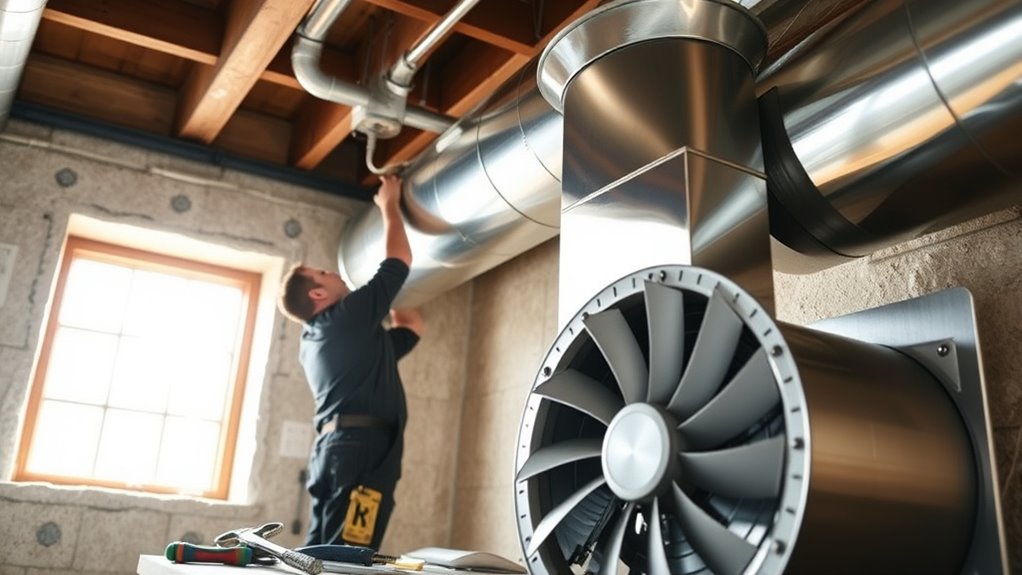
Ventilation systems are comprised of several key components that work together to ensure efficient air circulation and quality.
First, filters play a crucial role in removing dust and pollutants from the air, promoting a healthier environment.
Filters are essential for purifying air by eliminating dust and pollutants, contributing to a healthier living space.
Electric resistances are essential for heating elements, while heat pumps offer efficient heating and cooling options.
Cooling coils come into play for systems that need cooling functions.
Additionally, heat recovery units enable the energy-efficient exchange of heat between outgoing and incoming air.
Lastly, fans drive airflow through ducts, distributing air throughout your space.
Strategic Placement and Design Considerations

When planning your ventilation system, strategic placement and thoughtful design are key to maximizing airflow and comfort throughout your space. Ensure that vents are positioned to provide adequate airflow without obstructions from furniture or curtains.
Consider the room layout and window locations to enhance energy efficiency and maintain consistent temperatures. Additionally, pay attention to your building’s orientation—this can significantly improve natural ventilation.
Strategically placed windows help maximize airflow while minimizing heat gain or loss, especially in varying climates. Remember to prioritize air quality by placing windows away from pollution sources.
Maintenance Practices for Efficient Ventilation
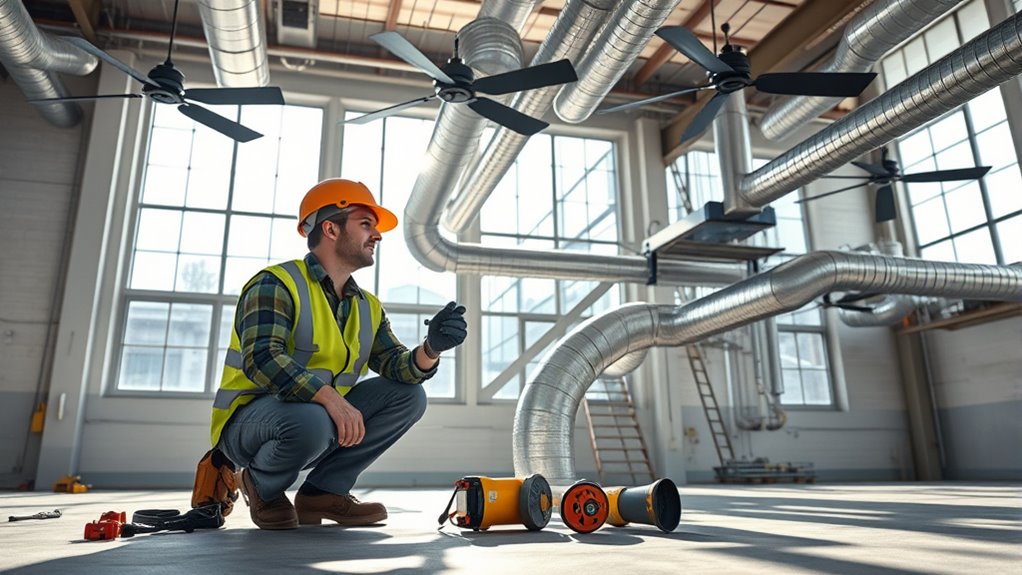
After you’ve established a well-designed ventilation system, maintaining it becomes vital for optimal performance and air quality.
Start by replacing air filters every 1-3 months to keep airflow smooth and efficient. Schedule professional duct cleaning every 5-7 years to prevent dust buildup, which can compromise air quality.
Replace air filters every 1-3 months and schedule duct cleaning every 5-7 years for optimal airflow and air quality.
Don’t forget to clean vent grilles regularly to ensure unobstructed airflow. Control moisture with exhaust fans and dehumidifiers to prevent mold growth, a common issue in poorly maintained systems.
Additionally, regular professional maintenance helps identify and fix problems early, ensuring your system runs efficiently.
Benefits of Natural vs. Mechanical Ventilation
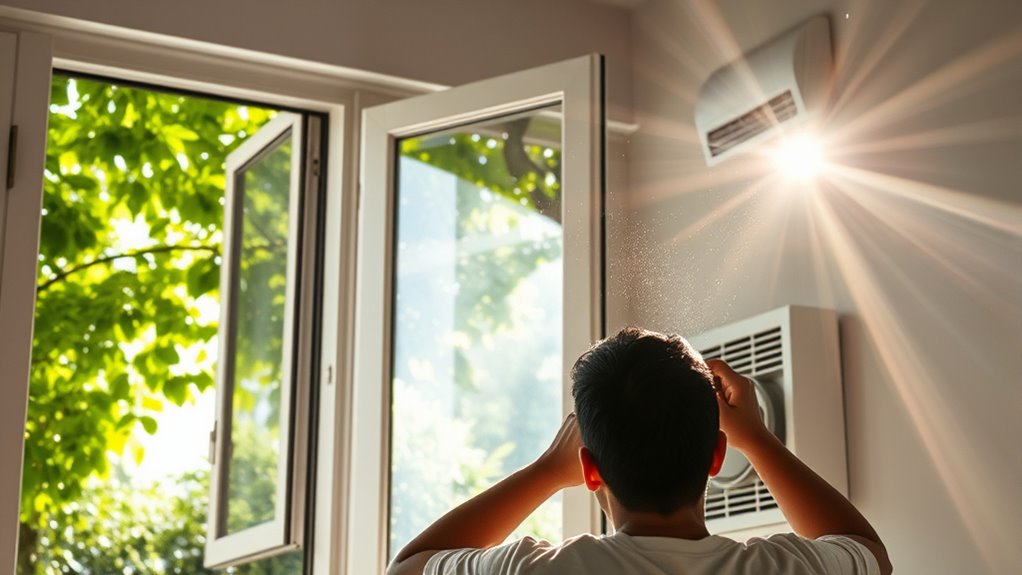
Choosing between natural and mechanical ventilation can significantly impact your building’s air quality and energy efficiency.
Natural ventilation is cost-effective, utilizing wind and thermal buoyancy, which can lower energy consumption in favorable climates. It also promotes better health and well-being, as occupants in naturally ventilated spaces report fewer symptoms. However, its effectiveness can vary with external conditions, and it may introduce noise and pollutants. Additionally, proper sealing mechanisms can enhance the efficiency of natural ventilation by minimizing unwanted air exchange.
On the other hand, mechanical ventilation offers consistent airflow and greater control over indoor conditions year-round. While it comes with higher installation and energy costs, its reliability and advanced air filtration capabilities enhance air quality. Additionally, regular maintenance of the air purifiers used in conjunction with mechanical ventilation systems can further improve indoor air quality.
Ultimately, your choice should align with your specific needs and local climate conditions.
Adapting Ventilation to Local Climate Conditions
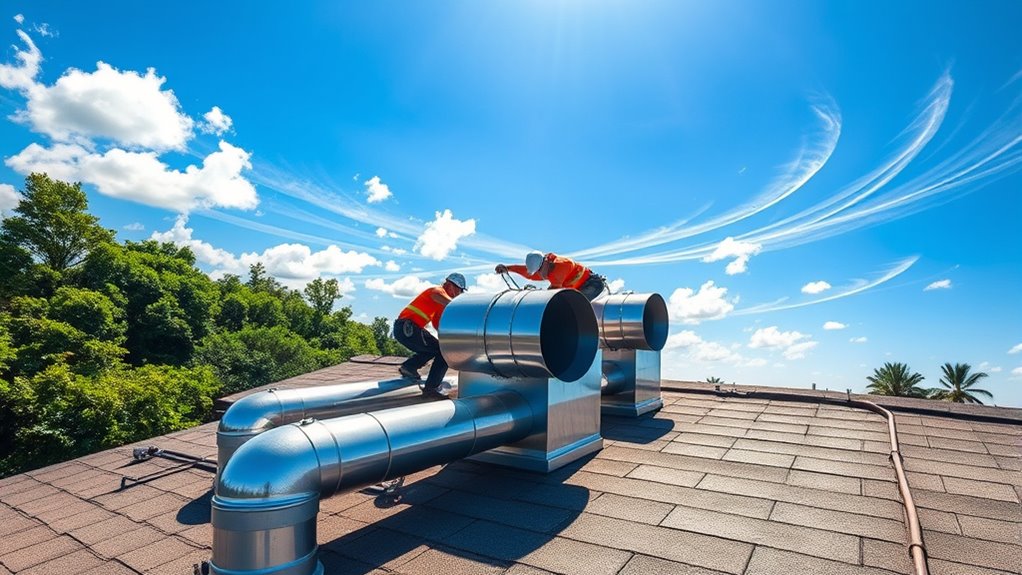
Adapting your ventilation system to local climate conditions is key to optimizing indoor air quality and energy efficiency.
In cold climates, consider exhaust ventilation to remove stale air while letting fresh air infiltrate through leaks.
For hot, humid areas, supply ventilation is preferable, as it pressurizes your home and controls moisture effectively.
If you live in mixed climates, balanced ventilation systems offer a neutral air exchange without pressurizing or depressurizing your space.
Remember to follow ASHRAE 62.2-2016 guidelines for ventilation rates, which vary based on your home’s size and occupancy.
Additionally, managing indoor humidity is crucial for preventing mold growth, so choose systems like energy recovery ventilation (ERV) for moisture control during humid seasons.
Enhancing Property Value Through Proper Ventilation
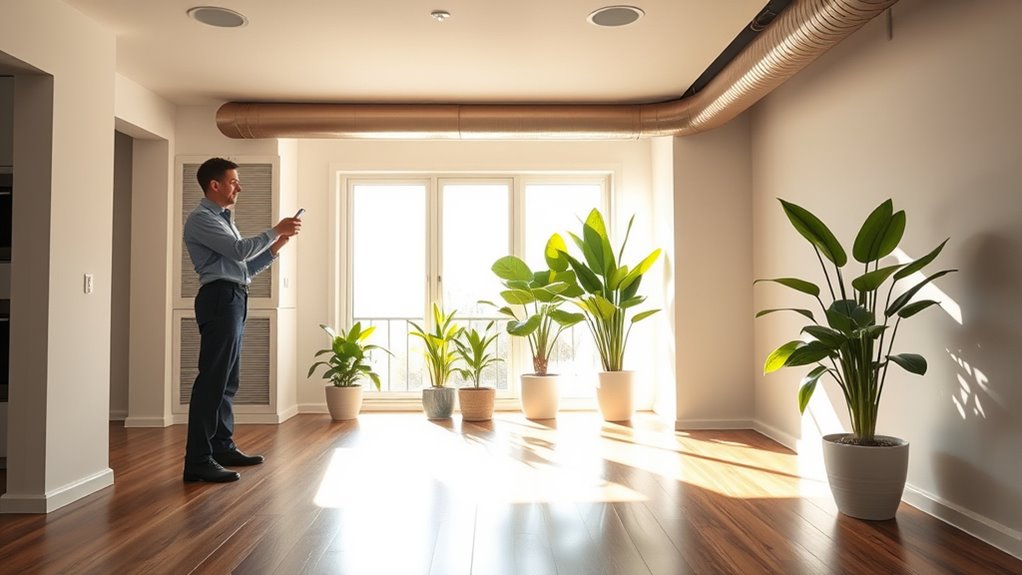
Proper ventilation not only improves indoor air quality but also significantly enhances your property’s value.
When potential buyers see a home with effective ventilation systems, they recognize the appeal of healthier living spaces. Energy-efficient systems reduce utility bills, which attracts eco-conscious buyers.
Moreover, modern ventilation is viewed as a desirable amenity, increasing marketability. Appraisers also consider these upgrades, as they can boost your home’s value by up to 10%.
Regular maintenance ensures these systems remain effective, preserving their benefits.
Ultimately, investing in proper ventilation not only elevates comfort and air quality but also offers a strong return on investment, making your property more competitive in today’s market.
Frequently Asked Questions
How Do I Calculate the Required CFM for My Home?
To calculate the required CFM for your home, first determine the room’s volume by measuring its length, width, and height in feet.
Use the formula ( text{Volume} = text{Length} times text{Width} times text{Height} ).
Next, decide on the desired air changes per hour (ACH), generally 4-8 for most rooms.
Finally, apply the formula ( text{CFM} = frac{text{Volume} times text{ACH}}{60} ) to find the required CFM.
Can I Install Ventilation Systems Myself or Hire a Professional?
You can definitely choose to install ventilation systems yourself or hire a professional.
If you’re handy and enjoy DIY projects, doing it yourself might save you money and give you control over the process.
However, if you lack experience, hiring a professional ensures safety and compliance with local codes.
Consider your skills, the complexity of the job, and the long-term benefits before making a decision that suits your needs best.
How Often Should I Replace Ventilation System Filters?
You should replace your ventilation system filters every 30 to 60 days if you’re in a heavy-use environment.
If your system runs less frequently, filters can last up to a year.
However, if you have allergies or asthma in your home, it’s wise to check them monthly.
Always follow the manufacturer’s recommendations, and keep in mind that seasonal changes might require more frequent replacements to maintain optimal air quality and system efficiency.
What Are Common Signs of Inadequate Ventilation?
When your environment feels a bit stifled, it might be time to pay attention.
You might notice abnormal chest movements or irregular breathing patterns. If you find yourself using extra effort to breathe or struggling to chat without pausing, these could be signs of distress.
Additionally, listen for unusual sounds like wheezing or crackles, and be aware of headaches or fatigue, which often accompany inadequate ventilation.
How Does Ventilation Impact Energy Bills Throughout the Year?
Ventilation significantly impacts your energy bills year-round.
In summer, it reduces cooling costs by decreasing attic heat buildup, making your air conditioning work less.
In winter, proper ventilation prevents heat loss, lowering heating expenses.
With balanced airflow, you avoid hot spots and ensure efficient system operation, which can extend the lifespan of your HVAC equipment.
Regular maintenance and optimizing your ventilation design can lead to noticeable savings on your energy bills.
Conclusion
In the battle between stale air and fresh breezes, proper ventilation emerges as your ultimate ally. While mechanical systems promise control and precision, natural ventilation offers a refreshing touch, inviting the outdoors in. Balancing these approaches not only enhances your indoor environment but also boosts your property’s value. So, whether you’re embracing the hum of fans or the gentle rustle of open windows, remember: a well-ventilated space is your key to comfort and health.
